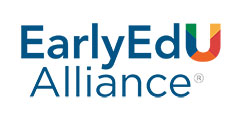California Transitional Kindergarten – California’s Early Learning Landscape
California Transitional Kindergarten Case Study
California's Early Learning Landscape
Nearly 3 million children ages 0–4 live in California. According to California’s Department of Education, only about 32% of the state’s 4-year-olds and 13% of its 3-year-olds are enrolled in some form of publicly supported preschool, pre-k, or TK. (Some early learning advocates consider these percentages underestimates because they do not account for children attending non-profits and fee-for service programs.) Along with TK, California’s publicly supported preschool system includes Head Start, which served more than 28,000 4-year-olds in 2021, and the California State Preschool Program (CSPP), which serves 3–4-year-olds from lower-income families, children in foster care, children experiencing homelessness, and other targeted groups. In addition to these programs, the long-established California Alternative Payment Program Association (CAPPA) connects low-income families to childcare and early learning opportunities and distributes federal and state childcare subsidies.
Before passage of the state Kindergarten Readiness Act in 2010, California’s children could enter kindergarten—effectively entering the state’s public school system—if they turned 5 by December 2, of their kindergarten year. The 2010 law rolled back that cutoff to September 2, forcing about 100,000 children to wait an extra year to begin public school. In 2012, the state implemented TK to provide a free steppingstone from preschool to public school for these older children.
Participation in TK has been inconsistent across the state’s more than 1,000 school districts. According to a 2022 Berkeley Children’s Forum7Abigail Slovick, Carla Bryant, Chunhan Huang, and Bruce Fuller, “Transitional Kindergarten in California: Early Growth and Uneven District Capacity,” Berkeley, CA: Children’s Forum, (2022), 1. report, about 40% of eligible children participating in California’s TK programs are enrolled in 30 “mostly urban” districts, concentrated in populous Orange, Los Angeles, and San Diego counties and the East Bay area of Northern California. These districts, according to the report, have the benefit of “stronger organizational capacity” to equip classrooms and recruit teachers. By contrast, the more numerous small, rural, and exurban school districts struggle to provide TK; in 2019–20, a third of the state’s school districts enrolled 12 or fewer children in TK, often integrating them into existing kindergarten classrooms.
Like so many other states, the COVID pandemic has severely impacted California’s public schools. It is believed to have caused an exodus of over 150,000 children and youth from the system, including over 60,000 from kindergarten. But the most significant COVID-inflicted blow has been to what Edgar Zazueta, executive director of the Association of California School Administrator calls the human capital that keeps schools running not just teachers but administrative or classified staff and support staff, including food service workers. Human capital was further compromised by attrition prior to the pandemic and unprecedented expectations during the pandemic. Two-thirds of California school districts surveyed in 20218Desiree Carver-Thomas, Dion Burns, Melanie Leung-Gagné, and Naomi Ondrasek, “Teacher Shortages During the Pandemic: How California Districts are Responding,” Palo Alto, CA: Learning Policy Institute, January 26, 2022. reported that they had faced an increased number of vacancies before the pandemic, mostly the result of retirements and resignations. The pandemic forced principals and other public-school leaders into decision-making roles they could not have prepared for, like addressing public health decisions such as social distancing and the necessity for remote learning. COVID has also disrupted the long pipeline of training and experience that generates new educational leadership.
Citations
- 7. Abigail Slovick, Carla Bryant, Chunhan Huang, and Bruce Fuller, “Transitional Kindergarten in California: Early Growth and Uneven District Capacity,” Berkeley, CA: Children’s Forum, (2022), 1.
- 8. Desiree Carver-Thomas, Dion Burns, Melanie Leung-Gagné, and Naomi Ondrasek, “Teacher Shortages During the Pandemic: How California Districts are Responding,” Palo Alto, CA: Learning Policy Institute, January 26, 2022.

